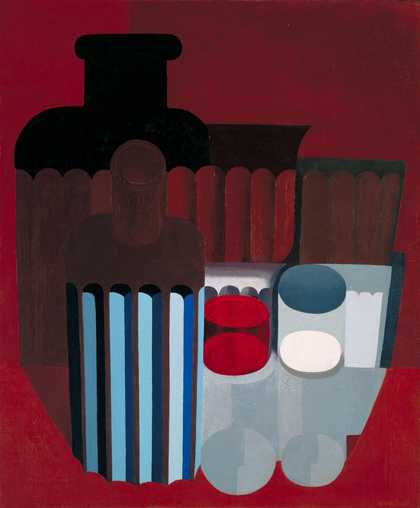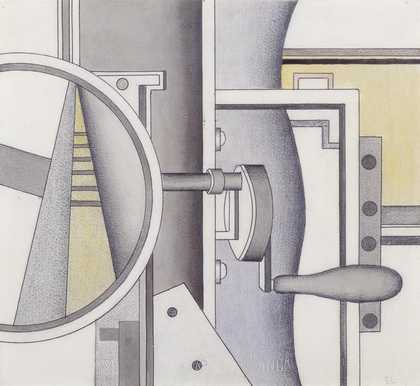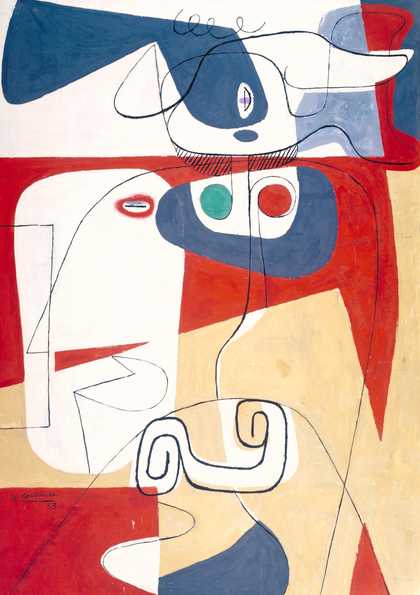
Amédée Ozenfant
Glasses and Bottles (c.1922–6)
Tate

Fernand Léger
Mechanical Elements (1926)
Tate

Le Corbusier (Charles-Edouard Jeanneret)
Bull III (1953)
Tate
The movement was founded by Edouard Jeanneret (better known as the modern architect Le Corbusier) and Amédée Ozenfant. They set out the theory of purism in their book Après le Cubisme (After Cubism) published in 1918. They criticised the fragmentation of the object in cubism and the way in which cubism had become, in their view, decorative by that time. Instead they proposed a kind of painting in which objects were represented as powerful basic forms stripped of detail. Fernand Léger was another key artist associated with purism.
A crucial element of purism was its embrace of technology and the machine and it aimed to give mechanical and industrial subject matter a timeless, classical quality. References to ancient Greek architecture can be seen in the fluting (like a Greek column) on the bottles in Ozenfant’s still life compositions.
Purism reached a climax in Le Corbusier’s Pavillon de l’Esprit Nouveau (Pavilion of the New Spirit), built in 1925 for the International Exposition of Decorative and Industrial Arts in Paris. This was hung with work by the three principals and also included the cubists, Juan Gris and Jacques Lipchitz. After this the key relationship between Ozenfant and Le Corbusier broke up.
